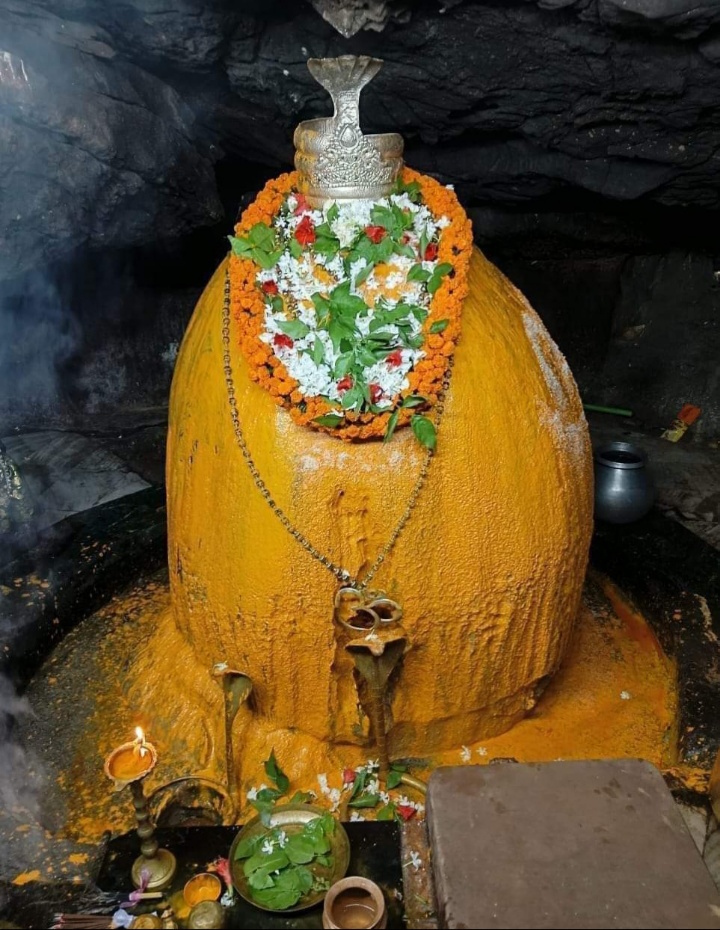Monday and the Worship of Lord Shiva: The Beauty of Sanatan Culture
Nihar Ranjan Acharya
Ph. 8249775817
E-mail : nihar.acharya 1973@gmail.com
In the rich and vibrant tradition of Sanatan culture, the worship of deities is woven deeply into the fabric of daily life. Among the many facets of this ancient heritage, the observance of specific days for honoring particular gods and goddesses stands out as a beautiful practice that brings spiritual discipline and a sense of connection with the divine. Monday, or Somvar, holds a special significance as the day dedicated to Lord Shiva, the embodiment of cosmic consciousness, transformation, and asceticism.
The worship of Lord Shiva on Mondays is a reflection of the profound spiritual and philosophical wisdom of Sanatan Dharma (Hinduism). It highlights the culture’s devotion to nature, cosmic rhythms, and the interplay of energies within the universe and the self.
Monday and Its Connection with Lord Shiva
Monday, called Somvar in Sanskrit, derives its name from Soma, meaning the Moon. According to Sanatan belief, the Moon is closely associated with Lord Shiva, who is often depicted with the crescent moon adorning his matted hair. This symbolic connection stems from the belief that Shiva controls the waxing and waning phases of the Moon, representing the cycle of life, death, and rebirth, a concept deeply ingrained in Hindu cosmology.
In Vedic astrology, the Moon is considered the controller of the mind and emotions. By worshiping Shiva, the great yogi and meditative force, on Mondays, devotees seek his blessings to calm the mind, remove inner turbulence, and achieve peace. Lord Shiva, also known as Mahadev, is revered for his boundless compassion, and worshiping him on this day is believed to alleviate sufferings and fulfill desires.
The Rituals and Spiritual Significance of Worshiping Shiva on Mondays
On Mondays, especially during the sacred month of Shravan (July-August), devotees flock to Shiva temples to offer their prayers. The rituals performed on this day reflect the simplicity, devotion, and profound symbolism of Sanatan Dharma:
- Abhishekam (Sacred Bathing): Devotees bathe the Shiva Lingam, an iconic representation of Lord Shiva, with water, milk, honey, and curd. This act symbolizes the cleansing of the soul and mind. Water, in particular, is associated with purity and life, while the use of milk represents nourishment and devotion.
- Offering Bilva Leaves: The offering of Bilva (Bael) leaves is considered highly auspicious in the worship of Lord Shiva. Each part of the Bilva leaf represents purity of thought, word, and deed. It is believed that offering these sacred leaves pleases Shiva and brings peace and prosperity.
- Chanting of Shiva Mantras: Devotees recite sacred mantras such as the Mahamrityunjaya Mantra or the Panchakshara Mantra (“Om Namah Shivaya”) as they pray for inner strength, longevity, and protection from negative energies. The repetitive chanting cultivates a meditative state, calming the mind and fostering inner harmony.
- Fasting: Observing a fast on Mondays is a widespread practice, especially among women who seek Lord Shiva’s blessings for the health and happiness of their families. Fasting is seen as a form of devotion and self-purification, reflecting the ascetic qualities of Shiva.
Through these simple yet profound rituals, Sanatan culture emphasizes the beauty of connection between the individual and the divine. It fosters a sense of surrender, devotion, and spiritual purity, transcending material desires.
The Beauty of Sanatan Culture
Sanatan Dharma, one of the oldest continuous religious traditions in the world, is marked by its deep reverence for the divine in all aspects of life. It is not just a religion, but a way of life—a Dharma—that integrates philosophy, rituals, mythology, art, and culture into the daily existence of its followers. The worship of Lord Shiva on Mondays beautifully reflects the core principles of this culture.
- Universality of the Divine: In Sanatan culture, every day, every element of nature, and every moment is seen as sacred. The Moon’s association with Shiva reflects this deep connection between the cosmos and divinity, where even celestial bodies are integrated into spiritual practice. The universe is not separate from the divine; rather, it is an expression of it.
- Inclusivity and Flexibility: The rituals associated with Shiva worship are simple and accessible to all, regardless of age, gender, or social status. Whether it’s offering water to a Shiva Lingam or chanting the names of the Lord, the worship emphasizes devotion over material wealth or status. This inclusivity is one of the defining beauties of Sanatan culture.
- Balance of Material and Spiritual Life: Sanatan Dharma doesn’t ask for the renunciation of material life but encourages a balance between the worldly and the spiritual. Fasting on Mondays is not merely about abstinence but a practice in self-control, devotion, and introspection, all while continuing to fulfill worldly responsibilities.
- Respect for Nature: The use of natural elements like water, milk, flowers, and Bilva leaves in Shiva worship highlights the deep respect Sanatan Dharma has for nature. Every element used in rituals has a symbolic and ecological significance, reflecting a harmonious relationship between humanity and the environment.
- Path of Bhakti (Devotion): Bhakti, or devotion, is at the heart of Shiva worship. The love and faith with which devotees offer their prayers every Monday transcend mere ritualistic practices and bring them closer to the divine. This aspect of Bhakti, where devotion becomes a personal and emotional connection with the divine, is one of the cornerstones of Sanatan culture.
Shiva: The Lord of Transformation
Lord Shiva represents the cycle of creation, preservation, and destruction—the natural rhythm of the cosmos. His role as the destroyer is not one of malevolence but one of transformation and renewal. He clears the path for new beginnings, both in the universe and in the hearts of his devotees. Worshiping Shiva on Mondays is symbolic of this transformative power—where devotees seek to dissolve their ego, ignorance, and material attachments to emerge spiritually renewed.
Shiva’s form, with his third eye, trident, and ashes smeared across his body, embodies the truth that life and death are part of the same cosmic cycle. His ascetic nature reminds devotees to seek detachment from material desires and focus on the eternal.
Conclusion
The worship of Lord Shiva on Mondays is a timeless practice that encapsulates the spiritual depth, inclusivity, and harmony with nature that defines Sanatan culture. It is a day when devotees across the world connect with the divine, seek peace of mind, and embody the principles of simplicity, devotion, and transformation. Through the rituals of Abhishekam, fasting, and chanting, devotees honor Shiva, the cosmic force of renewal, and align themselves with the natural rhythms of the universe.
In the broader context, the beauty of Sanatan Dharma lies in its eternal truths, adaptability, and deep-rooted connection between the self and the cosmos. The observance of Monday as Shiva’s day is just one of the countless expressions of a culture that honors the divine presence in every aspect of life, reminding us that spiritual practice and everyday life are inseparable.
nihar
©Nihar Ranjan Acharya


